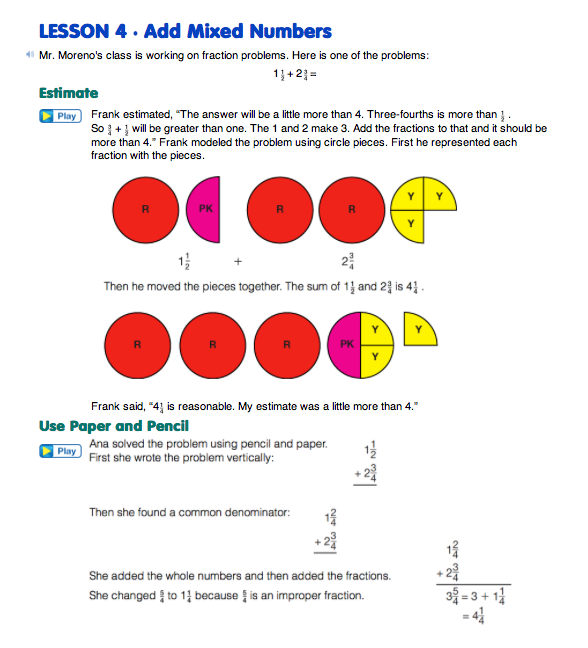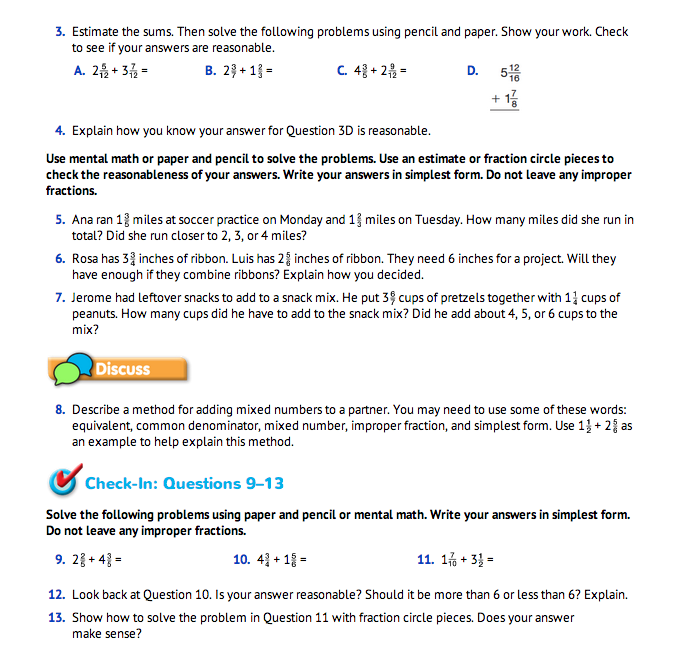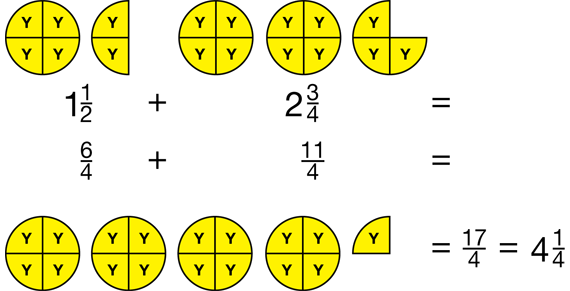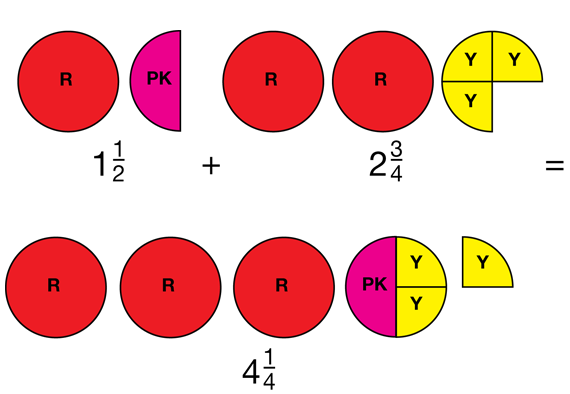Add Mixed Numbers
Est. Class Sessions: 1Developing the Lesson
Estimate sums. Display the following problems:
11/2 + 23/4
Ask students to estimate the sums without using paper and pencil. Encourage them to use the Fractions on Number Lines Chart, Fraction Chart, or Multiplication and Division Facts page in the Student Guide Reference section. They can also picture fraction circle pieces or a fraction benchmark number line in their heads.
Ask:
Use Addition Strategies. Ask students to find an exact answer for the problem using two methods that make sense to them. Encourage them to use circle pieces for at least one strategy.
Discuss strategies using fraction circle pieces. Students can find a common denominator by covering all the fractional pieces with pieces of one color. See Figure 1. Another strategy for adding 11/2 + 23/4 is shown in Figure 2, where students combine pieces to make as many wholes as possible.
Students may use pencil and paper to do the same problems. Students can rely on skills they have used previously to add fractions. The only new aspect here is that they have wholes as well as fractional pieces.
The problem 11/2 + 23/4 is discussed in the Student Guide. After students have shared their own strategies, read the discussion of this problem on the Add Mixed Numbers pages in the Student Guide and compare strategies. Discuss the last step in Ana's paper-and-pencil solution. Since the mixed number 35/4 contains an improper fraction, it is rewritten as 41/4 (35/4 = 3 + 11/4 = 41/4).
Ask:
Assign Questions 1–8 to student pairs. The questions give students practice adding mixed numbers with and without circle pieces. Question 8 asks students to describe a method for adding mixed numbers to a partner. No matter what strategy students choose, encourage them to check to see if their answers are reasonable and that they have left no improper fractions in their final answers.
Students may choose to add the fractions first, then change any improper fractions in the sum to mixed numbers. Or, students may choose to change the mixed numbers to improper fractions before they add. As students share, circulate and select several students to describe their methods to the class during Summarizing the Lesson.

















